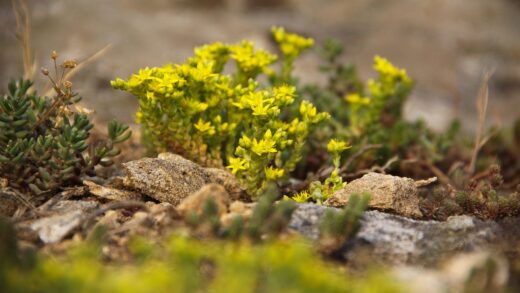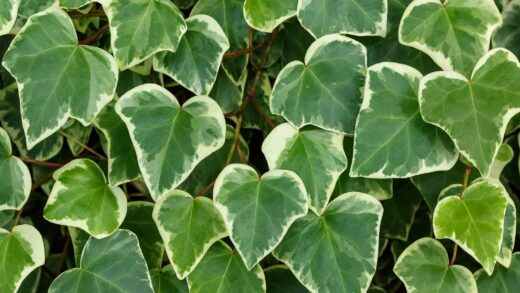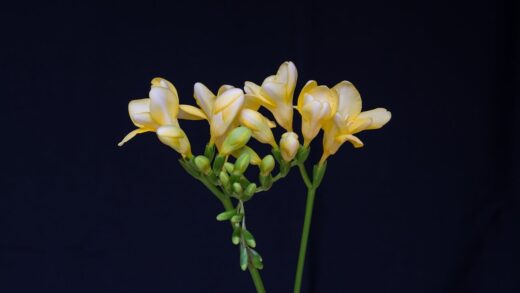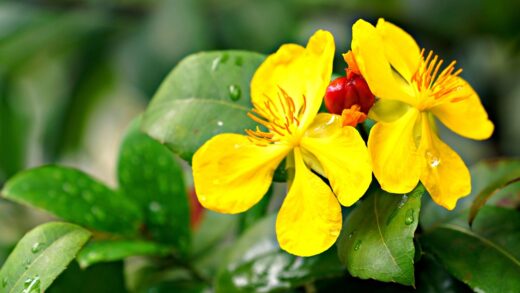To achieve the spectacular and continuous floral display for which the Madagascar periwinkle is celebrated, a well-considered approach to fertilization is essential. While this plant is not an excessively heavy feeder, its rapid growth and prolific blooming throughout the hot summer months place a significant demand on the available nutrients in the soil. Providing a steady and balanced supply of essential elements is key to fuelling this energetic performance. A proper fertilization strategy involves more than just periodic applications; it requires an understanding of the plant’s specific nutritional needs, the right timing, and the appropriate type of fertilizer to use. Overlooking this aspect of care can result in stunted growth, pale foliage, and a disappointing lack of flowers.
The primary goal of fertilizing the Madagascar periwinkle is to support its flowering capacity without promoting excessive, weak foliar growth at the expense of blooms. This requires a fertilizer that is balanced or one that has a slightly higher proportion of phosphorus, the nutrient most closely associated with flower development. It is crucial to avoid high-nitrogen fertilizers, which can stimulate a lush, green plant with very few flowers. The method of cultivation—whether in the ground or in containers—also heavily influences the frequency and type of fertilization required, as nutrients are depleted at different rates in these environments.
Understanding the role of the three primary macronutrients is fundamental. Nitrogen (N) is responsible for green, leafy growth; phosphorus (P) supports root development and flowering; and potassium (K) contributes to overall plant vigour, disease resistance, and water regulation. A balanced fertilizer will have roughly equal parts of these three elements, indicated by numbers like 10-10-10 on the packaging. A “bloom booster” formula might have a ratio like 10-20-10, emphasizing phosphorus to encourage more flowers. Choosing the right formulation is the first step in effective nutrient management.
Ultimately, a successful feeding regimen is one that is consistent and moderate. Both under-fertilizing and over-fertilizing can be detrimental to the plant’s health. Too few nutrients will lead to a weak, struggling plant, while an excess of fertilizer can burn the roots, cause a harmful buildup of salts in the soil, and paradoxically inhibit nutrient uptake. Therefore, adhering to recommended application rates and observing the plant’s response are critical for maintaining its health and maximizing its ornamental value throughout the growing season.
Choosing the right fertilizer
Selecting the most appropriate fertilizer for your Madagascar periwinkle is a critical decision that will directly impact its performance. The ideal choice is a balanced, all-purpose fertilizer or a formulation specifically designed to promote blooming. Look for a product where the three numbers of the N-P-K ratio are either equal, such as 10-10-10, or where the middle number (phosphorus) is slightly higher. This ensures that the plant receives adequate nitrogen for healthy leaf growth and sufficient phosphorus and potassium to support robust root systems and prolific flower production.
More articles on this topic
Fertilizers are available in several different forms, each with its own advantages. Slow-release granular fertilizers are an excellent option for long-term, consistent feeding. These granules are typically mixed into the soil at planting time and release their nutrients gradually over a period of several weeks or months each time the plant is watered. This “feed it and forget it” approach provides a steady, low-level supply of nutrients that is ideal for in-ground plantings and reduces the risk of over-fertilizing.
Water-soluble or liquid fertilizers, on the other hand, provide a quick boost of nutrients that are immediately available for the plant to absorb. These are typically mixed with water and applied every two to four weeks during the growing season. This method is particularly well-suited for container-grown plants, as the frequent watering required for pots tends to leach nutrients out of the soil more quickly. Using a liquid fertilizer at half the recommended strength is often a good practice to avoid burning the roots.
Organic fertilizers, such as compost, well-rotted manure, or fish emulsion, are another excellent choice for enriching the soil. These materials not only provide a slow and gentle release of a wide spectrum of nutrients but also improve the soil’s structure, drainage, and microbial activity. Incorporating compost into the garden bed before planting is a fantastic way to build a healthy soil foundation. For ongoing feeding, organic options like liquid seaweed or fish emulsion can be used in the same way as synthetic water-soluble fertilizers.
Application timing and frequency
The timing of fertilizer application is crucial for aligning nutrient availability with the plant’s growth stages. The first application should ideally occur at the time of planting. If you are using a slow-release granular fertilizer, this is the perfect moment to incorporate it into the planting hole or the top few centimetres of the garden bed or potting mix. This initial charge of nutrients provides a strong foundation for the young plant as it establishes its root system and begins its vegetative growth phase.
More articles on this topic
For plants grown directly in garden beds with reasonably fertile soil, a single application of a slow-release fertilizer at planting time may be sufficient for the entire season. However, in sandy soils or in regions with long growing seasons, a second application may be beneficial mid-summer to sustain the plant’s vigorous blooming into the autumn. This second dose helps to replenish the nutrients that have been consumed by the plant during its peak flowering period.
Container-grown Madagascar periwinkle requires a more frequent and consistent feeding schedule. Because nutrients are leached from the potting soil with each watering, they need to be replenished regularly. Begin feeding with a balanced, water-soluble fertilizer about two to three weeks after planting, once the plant has had a chance to settle in. Continue to apply the liquid fertilizer every two to three weeks throughout the spring and summer. This regular feeding schedule is vital for maintaining the energy reserves needed for continuous flower production in the confined environment of a pot.
It is important to taper off fertilization as the growing season comes to an end in the autumn. As temperatures cool and daylight hours shorten, the plant’s growth naturally slows down. Continuing to fertilize at this time can encourage a flush of tender new growth that is vulnerable to damage from the first frosts. Cease all fertilizer applications about four to six weeks before the average first frost date in your area to allow the plant to harden off naturally.
Recognizing nutrient deficiencies
Learning to identify the visual signs of nutrient deficiencies can help you diagnose and correct problems before they severely impact the health of your Madagascar periwinkle. One of the most common symptoms is chlorosis, which is a general yellowing of the leaves. When the older, lower leaves turn yellow first while the new growth remains green, it often indicates a nitrogen deficiency. Nitrogen is a mobile nutrient, so the plant moves it from older tissues to support new growth when it is in short supply.
If the chlorosis appears on the new, upper leaves first, the issue may be a deficiency in an immobile nutrient like iron. Iron chlorosis is characterized by yellow leaves with a distinct pattern of green veins, often described as “interveinal chlorosis.” This is frequently not caused by a lack of iron in the soil, but rather by a soil pH that is too high (alkaline), which makes the existing iron unavailable for the plant to absorb. Correcting the soil pH is the most effective long-term solution in this case.
A phosphorus deficiency can be more subtle and is often characterized by stunted growth and a poor or delayed flowering response. The leaves may take on a darker, dull, or even purplish hue. Since phosphorus is crucial for energy transfer and flower formation, a plant that looks otherwise healthy but refuses to bloom prolifically may be suffering from a lack of this key nutrient. Using a fertilizer with a higher middle number (P) can help to address this issue.
A lack of potassium can lead to weak stems and a general lack of vigour. The most classic symptom of a potassium deficiency is a yellowing or browning that occurs along the margins or edges of the older leaves. The plant may also be more susceptible to diseases and less tolerant of drought stress. Ensuring you are using a balanced fertilizer that contains adequate potassium (K) is the best way to prevent this problem and maintain the overall resilience of the plant.
Organic versus synthetic options
When choosing a fertilization strategy, gardeners have the choice between organic and synthetic products, each with distinct characteristics and benefits. Synthetic fertilizers are manufactured chemical compounds that provide nutrients in a concentrated, readily available form. They are fast-acting, and their precise nutrient content is clearly stated on the label, which allows for very specific and controlled feeding. This can be particularly useful for quickly correcting a diagnosed nutrient deficiency or for providing the consistent feeding required by container plants.
However, the rapid release and high concentration of nutrients in synthetic fertilizers also carry risks. It is relatively easy to over-apply them, which can lead to fertilizer burn on the plant’s roots and a harmful buildup of mineral salts in the soil over time. These salts can damage soil structure and harm beneficial soil microorganisms. Furthermore, synthetic fertilizers do nothing to improve the long-term health and structure of the soil itself; they simply feed the plant.
Organic fertilizers, in contrast, are derived from natural materials such as plant matter (compost, kelp meal), animal products (manure, bone meal), or mined minerals. These materials release their nutrients more slowly, as they must be broken down by soil microorganisms before they become available to the plant. This slow-release process provides a gentle, steady source of nutrition that is less likely to cause fertilizer burn and supports a healthy, living soil ecosystem.
In addition to providing essential nutrients, organic fertilizers also improve the physical properties of the soil. They add organic matter, which enhances soil structure, improves water retention in sandy soils, increases drainage in clay soils, and provides food for beneficial microbes, fungi, and earthworms. While they may be slower to show results than their synthetic counterparts, organic fertilizers build a healthier, more resilient soil environment in the long term, which ultimately benefits the plants grown in it. A hybrid approach, using a foundation of organic matter with occasional supplementation from a targeted synthetic fertilizer, can often provide the best of both worlds.


















